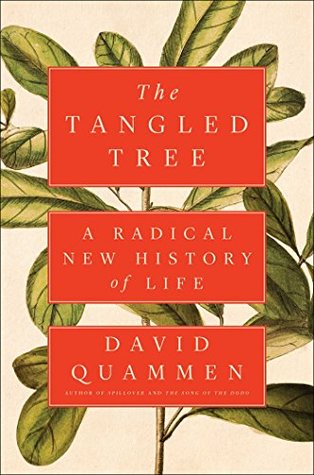More on this book
Community
Kindle Notes & Highlights
Read between
September 9 - September 16, 2018
Before long, he could see the close similarity between human hemoglobin and chimpanzee hemoglobin, and that human hemoglobin was less similar to hemoglobin found in orangutans. He could also tell a pig from a shark just by looking at the molecular fingerprints. Of course, there were easier ways to tell a pig from a shark, but never mind.
You name something Methanobacterium ruminantium, and then where do you put it? This may sound like an exercise in arcana, a marginal activity of risible triviality beside which stamp collecting looks like an adventure sport. Bacteria are tiny, relatively simple, invisible. But if being invisible made things unimportant, gravity and microwaves would be unimportant too.
Then, in 1978, a new paper of high interest to both men appeared in a relatively obscure European journal. This paper, from a French team in Strasbourg, offered something never yet seen: the complete sequence of bases (not just a sampling of fragments) for Woese’s molecule of record, 16S rRNA, from a single bacterium. The bacterium was that familiar bug E. coli. The method of sequencing was essentially Fred Sanger’s, modified by use of a new ingredient: extract of cobra venom, to help cut the molecule. The information value of the full sequence, to researchers such as Woese and Doolittle, was
...more
This highlight has been truncated due to consecutive passage length restrictions.
He wanted to study ecology. Rejected by the Botany Department, he joined Zoology instead but became a plant ecologist anyway. He distinguished himself at Illinois by presenting a dissertation in zoology that had nothing to do with animals.
The concept of “species” is commonly supposed to be secure. It isn’t secure. It’s especially insecure in the realm of bacteria and archaea, but it’s even a bit blurry when scientists try to distinguish one species of plant or one species of animal from another. The boundaries blur. The edges are as porous as Goretex—or, in some cases, as cheese cloth. One reason for the blur, one symptom of the porosity, is horizontal gene transfer—genes moving sideways instead of just downward from parent to offspring. If genes cross the boundary between one species of bacteria and another, then in what sense
...more
You could think of it this way: as domestication and transfer of duties. Wolves find their own food. Dogs, being domesticated, rely on humans to feed them. By mutual agreement, over the course of fifteen thousand years, wolf descendants have transferred their food-gathering functions (and responsibilities) to us. It began with bones and meat scraps at the edges of human campfires, probably. It progressed to all manner of extremes. In exchange for food and other emoluments, canines now offer love, bark at mailmen, herd sheep, point at pheasants, and chase Frisbees. Likewise mitochondria: they
...more
Further complicating matters was the fact, revealed as more genomes were sequenced and compared, that those bacteria captured early in eukaryotic cells—the ones that became mitochondria and chloroplasts—had themselves been recipients of horizontal gene transfer, from different kinds of bacteria, before their capture. This meant parts of genomes existed within other genomes before becoming parts of still other genomes, including yours. It was all a snarl. It was a mess. It was a plate of spaghetti. It was wonderful.
I guess I’ve always believed that if you’re not wrong half the time,” he said, “then you’re not being brave enough.”


